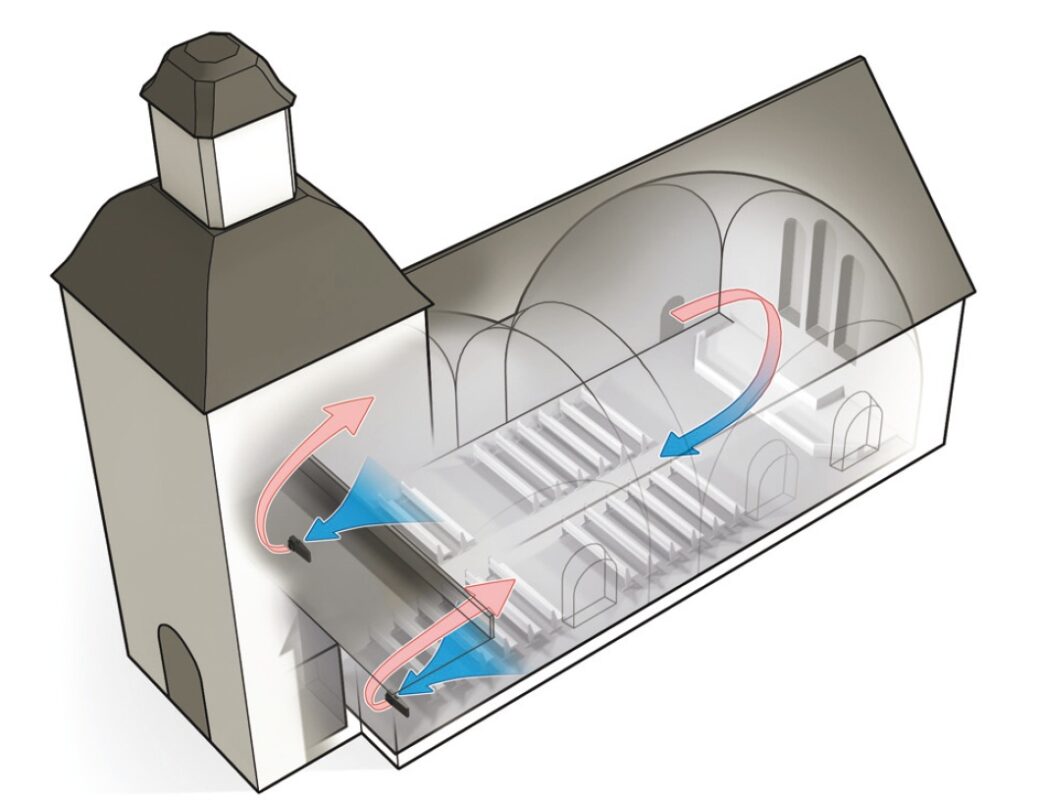In the search for sustainable and cost-effective climate control solutions, the discussion often centers around whether dehumidification offers a superior alternative to heating. The core of this article lies in the contrasting approaches to achieving comfortable indoor environments, with a particular focus on their energy consumption, operational costs, and environmental impacts.
From Traditional Heating to Advanced Dehumidification
While traditional heating systems increase air temperature to provide comfort, they often lead to significant energy use, especially in cooler climates. This method’s effectiveness in warming spaces comes at the cost of high energy consumption, driven by the need to counteract the substantial temperature differences between indoors and outdoors.
Furthermore, traditional heating, while providing the necessary warmth, falls short in addressing the comprehensive needs of these environments, where issues like corrosion, odour, and high maintenance costs prevail due to excessive humidity.
Advanced dehumidification technologies not only offer an efficient way to control temperature but also tackle humidity directly. This dual-action capability ensures a more sustainable, cost-effective approach to maintaining indoor climate conditions.
Airwatergreen’s Technological Edge
An external study tested Airwatergreen’s FLEX dehumidifier in sewage pump stations and district heating maintenance chambers, demonstrating a transformative shift from traditional heating to advanced dehumidification. The findings reveal that by addressing the root cause of discomfort and inefficiency—excess moisture—Airwatergreen’s technology achieves not just marked improvements in climate control but also substantial energy savings and environmental benefits. Specifically, in sewage pump stations, this technology resulted in energy savings of up to 70%, simultaneously resolving issues related to odour and corrosion without the temperature dependencies inherent to traditional methods.

Moreover, the study underscored the versatility of Airwatergreen’s technology in maintaining optimal conditions in district heating maintenance chambers. Here, the technology effectively controlled humidity, thereby safeguarding against corrosion and enhancing safety and durability, areas where traditional heating methods fall short.
Dehumidification demonstrates clear benefits over traditional heating, especially in churches characterised by large spaces and sporadic usage, which pose distinct climate control challenges.
In a case study involving a church within the Strängnäs Diocese, which initially used an electric boiler for heating and consumed 37,900 kWh/year, a strategic shift was made. By lowering the temperature to 5°C and implementing a FLEX dehumidifier, they significantly reduced energy consumption. The dehumidifier’s operation led to managing moisture effectively while cutting down the annual energy usage for heating, resulting in substantial energy savings and enhanced control over humidity.
Economic and Environmental Benefits
The shift towards Airwatergreen’s dehumidification technology is not just a step towards more efficient climate control but also a move towards significant cost savings. By dramatically reducing energy consumption—between 3 to 5 times in some cases (cf. Report-Energy consumption-Heating-Dehumidification in Swedish)—Airwatergreen’s approach offers a cost-effective alternative to traditional heating. Moreover, this technology is in harmony with environmental sustainability goals, as it addresses climate change concerns through reduced energy usage.
The advantages of adopting Airwatergreen’s technology extend well beyond energy and cost efficiencies. By improving indoor air quality and reducing the risk of mold and mildew, Airwatergreen’s solutions contribute to a healthier indoor environment. This aspect of their technology is invaluable, considering the long-term health benefits and the preservation of the structural integrity of buildings.
The insights gained from exploring Airwatergreen’s dehumidification technology encourage a reevaluation of existing climate control strategies. There’s a growing recognition of the need for sustainable, efficient, and cost-effective solutions in both commercial and residential settings. Airwatergreen’s innovative approach not only highlights the potential for significant energy and cost savings but also underscores the importance of adopting technologies that offer environmentally friendly solutions for our climate control needs.
As we navigate towards a future where sustainability and efficiency are paramount, Airwatergreen’s dehumidification technology stands out as a key player in transforming climate control practices.

